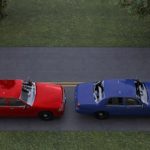- Need Any Help: +1 647-760-5505 or
- info@trubicars.ca
Learning to drive can be exciting at any time of year. Many experts suggest that learning to drive in winter is the way to go because you will learn how to control your vehicle in poor conditions with a driving instructor sitting next to you.
Many of us are excited about taking that summer road trip, but although it is the summer, things could still go wrong. At Trubicars, we certainly agree with the advantages of learning to drive through the instructions from an experienced driving instructor.
Although learning to drive in winter conditions can be an excellent experience, there can be problems with summer driving that some people may not think about. Trubicars can help to shed some light on this.
Responding early can be far better than doing so suddenly at the last moment, mainly because it does not always turn out as well as you would like. Being prepared for a winter breakdown and having a winter driving survival kit in your vehicle can help you survive even being stuck for a couple of hours. Is something like that really needed while driving in the summer? Once you see what that kit should include, you will realize that the answer to that question is a big yes.

If you think about the need for a vehicle survival kit, it’s often about being stuck in deep snow or your vehicle breaking down while driving in bad weather. However, there is more to it than that. Placing a few items in your vehicle can help you and your passengers remain comfortable if you get stuck, stranded, or if your vehicle breaks down, including in the summer months. The first thing you may want to consider having is a roadside assistance membership. It can become a valuable asset at any time of year.
Although many drivers may not think of having a vehicle breakdown or being stranded outside of winter, it does happen. Having a G2 license means you are allowed to drive on the freeway. Sometimes problems occur while on the freeway and with limited exits, as this means you would become difficult going for help.
Sitting on the shoulder of the freeway is not as safe as some think. However, sometimes you don’t have much of a choice if your vehicle has broken down. Flares or reflective triangles would be beneficial in the back of your vehicle’s position. Placing two or three of them beginning 30 metres behind to warn approaching drivers that you are stranded would be wise.
Throwing these items into the back of your vehicle may cause you to become distracted, so you need a place to put these items. Anything from a small to a medium-sized plastic bin with a lid or a good size duffle bag would be ideal for these items. These items take up little space in your vehicle but will help to keep things organized. Begin with adding those flares or reflective triangles to the bin.
Since it is summer, things can get hot, so having sunscreen can help to protect you from the harmful UV rays anytime you have to remain outside of the vehicle for long periods of time. Since you may need to be outside the vehicle to change a flat tire or help boost your battery, having an umbrella or rain jacket will help you remain dry and comfortable.
There may be times that you may injure yourself while you are stranded, so having an up-to-date first-aid kit at any time of year is a good idea. Not all emergencies happen in daylight hours, so a flashlight with batteries outside of the flashlight so they will not leak into the flashlight, which can cause the flashlight to become useless, is an addition to your kit.
Other than booster cables, a tire pump and tire sealant can be helpful for those moments when you run over a nail which can cause a slow leak and need to pump up the tire to get to a repair shop can be added to the kit. Even if you are not mechanically inclined, having a small tool kit consisting of pliers, screwdrivers, wrenches, duct tape, and a few rags can help when out in the middle of nowhere.
An extra jug of washer fluid is always a good idea, as well as a jug of water or engine coolant if the engine is overheating. Knowing where to add it can be found in the owner’s manual, so ensure the manual is in the glove compartment. Although it is the summer, it can get cool at night, so having a blanket in the vehicle can be helpful.
Driving toward the sunset can create glare that can sometimes go below the sun visor in the vehicle, so a hat with a brim and sunglasses would be a good idea. Remember to bring a phone charger, a fresh water bottle, and some energy snacks to keep you going if you get stranded for hours.
Having open windows can increase the risk of insects, such as bees or wasps flying into the vehicle. If you are allergic to stings and are stung, ensure you have the proper medication prescribed to you. If you are not allergic but are in pain and that pain is distracting you from driving, you may need something to pull the stinger out. If the pain has not reduced, you can take something for the pain, such as Advil or Tylenol, but ensure you are ready to drive before pulling away again.
Driving in the summer can be a lot of fun, especially when taking a road trip. Preparing to drive in summer can also take as much effort as it does in winter. Although the survival kits may look different for these two seasons, they both serve similar purposes, which is to help each of us survive until help arrives.
Learning to become a safe driver with the help of Trubicars does not end after passing your driving test. We are here to help you grow into a competent and safe driver for many years to come! For more information on what Trubicars can do for you, contact us!

 February 13, 2024 by
February 13, 2024 by Reema Sharma
Reema Sharma
 January 17, 2024 by
January 17, 2024 by Trubicars
Trubicars
 January 17, 2024 by
January 17, 2024 by Trubicars
Trubicars
Once you acquire the knowledge provided in
those tests, you are ready to pass the
test,
the first time.
